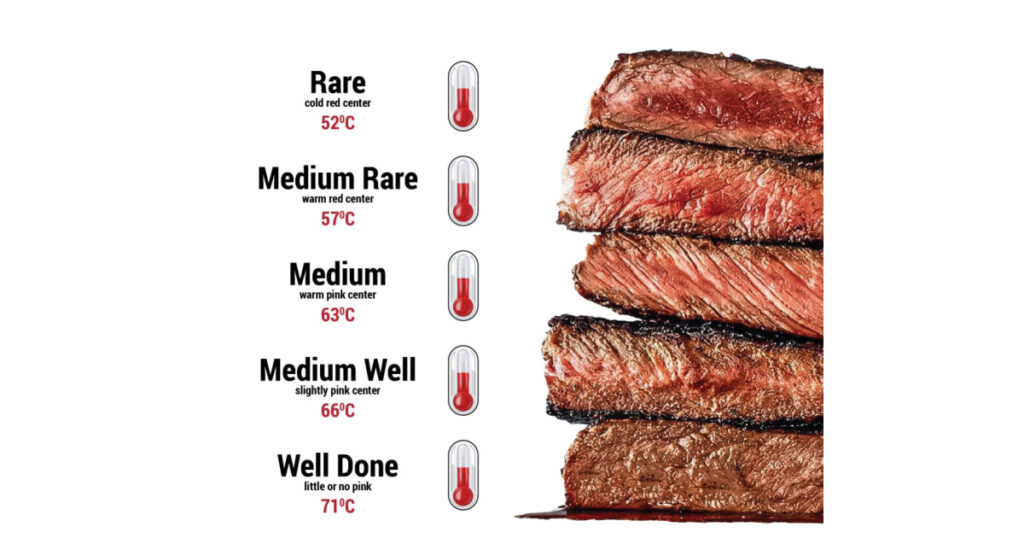You’ve probably heard someone who likes their steak cooked “rare” refer to the steak as bloody. This, of course, is referring to the red juice that comes out when you cut into a rare steak. Did you know, however, that this ‘steak blood’ isn’t blood at all? It’s a common misconception, and we’re here to tell you what that red juice actually is and why it could even be good for you.
What is that Red Juice in Steak?

The red juice you often notice in your steak is not actually blood, contrary to popular belief. Rather, it is a mixture of water and a protein called myoglobin that is found in muscle tissue. When the meat is cooked, the heat causes the myoglobin to break down and release clear liquid along with any previously trapped water. (1)
Read: Italy moves to ban lab-grown meat to protect food heritage
The color of the liquid can range from pink to red depending on the level of doneness in the steak. For example, a rare steak will have more red juice than a well-done steak. The red juice is what gives the steak its characteristic flavor and richness. This is elevated when combined with other types of ingredients, such as butter or wine, to create a sauce.
During the slaughtering process, the blood is almost completely drained out of the cow. There is very little, if any, blood left over in the muscle. The muscle is the part of the animal that we eat – the meat. So if your reason before for not wanting to eat rare steak was not wanting to consume blood, then fear not; there is no blood involved.
Why Do Chefs Prefer Rare or Medium Rare Steak?
Chefs often prefer rare or medium-rare steak for a number of reasons. Firstly, a rare or medium rare steak retains more of its natural flavors and juiciness. The less time a steak cooks, the less chance it has to dry out, losing the moisture that gives it its tenderness and delicious texture.
A rare or medium rare steak also allows the diner to appreciate the full flavor profile of the beef. The longer the steak is cooked, the more of its natural flavors are cooked out, leaving it a dry and tasteless protein. A rare or medium rare steak, on the other hand, retains the taste of the meat and can really showcase the complexity and nuances of the beef’s flavor. In most chefs’ opinion, why bother selecting a high-quality steak if you’re going to cook all the flavor out of it?
Health Benefits of Consuming Rare or Medium Rare Steak
Consuming rare or medium-rare steak in moderation can provide a number of health benefits. Beef is a good source of protein, iron, and vitamin B12. It can also contain zinc, selenium, and niacin, along with healthy fats as found in grass-fed beef. (2)
Read: C40 cities set to reduce meat, dairy, and private vehicles by 2030
However, like most foods, moderation is key. Studies have found that consuming too much red meat, especially well-done red meat that has been cooked at high temperatures, can increase the risk of certain types of cancers. This is because cooking meat at high temperatures can produce carcinogenic compounds which can increase the risk of cancer. Cooking meat to a rare or medium rare state reduces the production of these carcinogens.
Additionally, overcooking meat can destroy essential nutrients, making it less healthful overall. Therefore, consuming rare or medium rare steak in moderation can provide all the health benefits that beef offers in a delicious and tender steak without the added risk of carcinogens.
The Bottom Line
In case you were worried, the red juice in steak is not blood but a mixture of water and myoglobin. Chefs prefer rare or medium rare steak because of its natural flavor and juiciness, while consuming rare or medium rare steak in moderation provides essential nutrients and mitigates the risk of carcinogens. So, if you prefer a more juicy and flavourful steak, don’t be afraid to go against the traditional well-done steak preference.
Keep Reading: The Game-Changing Hack for Removing the White Tendons From Chicken Breasts We All Need To Know
Sources
- “That red juice oozing out of your steak isn’t blood.” NY Post. Hayley Richardson and Natalie Keegan. May 18, 2017.